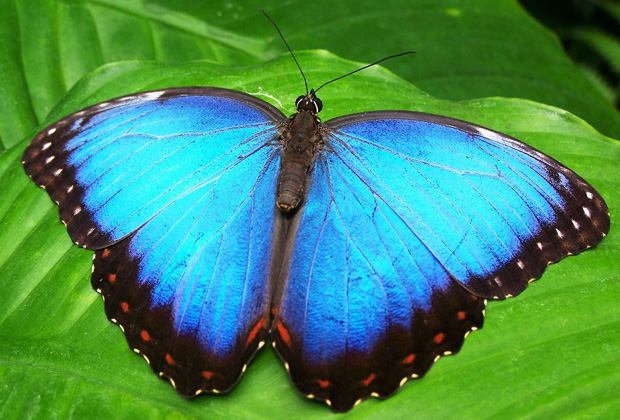Scientists from the Australian National University (ANU) believe butterflies could inspire solar cell technology.
Dr Niraj Lal from ANU’s Research School of Engineering says nanostructures that mimic butterfly wings are the key.
Dr Lal’s inspiration is from experiments on the Peruvian Morpho Didius butterfly.
The Morpho’s wings scatter light to produce an iridescent blue.
This ability to control light could feed into new solar cell, architectural and even stealth technologies.
“Techniques to finely control the scattering, reflection and absorption of different colours of light are being used in the next generation of very high-efficiency solar panels,” Dr Lal said.
“Being able to make light go exactly where you want it to go has proven to be tricky up until now.”
Solar cell layers absorb different wave lengths
Dr Lal said the aim of the experiment is to absorb blue, green and ultraviolet light in the “perovskite” layer of a solar cell.
The “silicon” layer absorbs the red, orange and yellow light.

This is known as a tandem solar cell with double-decker layers.
As well as Butterfly wings could inspire new solar cell technology, perfecting the technique could open the door to applications in architecture too.
Windows could filter light to make opaque objects transparent to certain colours.
“We were surprised by how well our tiny cone-shaped structures worked to direct different colors of light where we wanted them to go,” Dr Lal said.
“Using our approach, a window could be designed to be transparent to some colours non-see through and matte textured for others.
“So there are very cool potential applications in architecture.”
Cabbage moths hold key to optimum solar panel angle
This isn’t the first time a member of the Lepidoptera family has attracted solar researchers.
The Cabbage White Butterfly, or the Cabbage Moth, might contribute to more efficient solar panels.
Cabbage Whites take flight before other butterflies on cloudy days – and it’s all in the unique way they hold their wings.
The moth holds its wings at the best angle to increase its temperature, say researchers from the University of Exeter.
Holding its wings at 17 degrees increased the moth’s temperature by 7.3 degrees Celsius compared to horizontal.







































